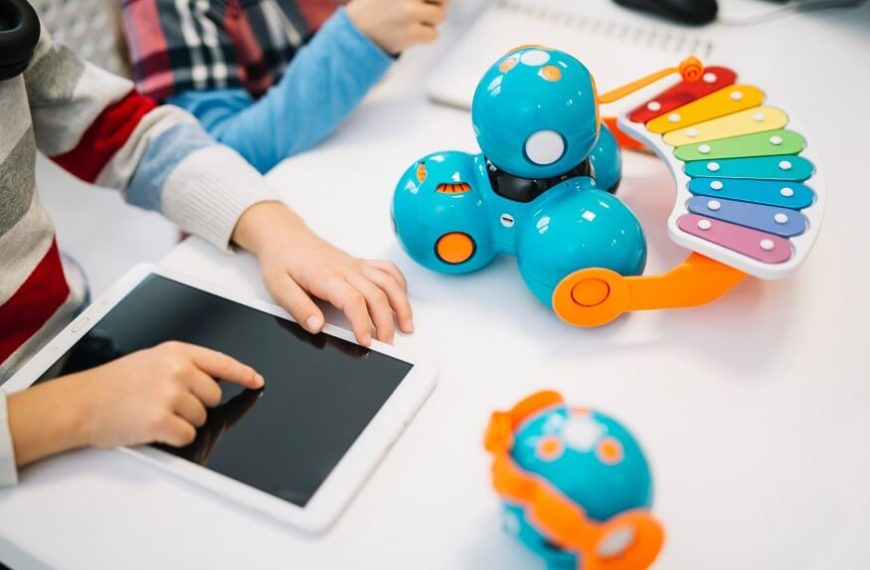In the intricate web of a child’s development, the role of parents is unparalleled. They are the architects of a child’s early experiences, shaping the foundation upon which future learning is built. In recent times, there has been a paradigm shift in the way parents perceive education and play. The notion that learning is confined to the classroom is gradually evolving, with an increasing acknowledgment of the symbiotic relationship between play and education. This article explores the dynamic interplay between play and learning, delving into why parents are best positioned to facilitate this harmonious balance.
I. The Power of Play in Early Childhood Development:
- Cognitive Development:
- Social and Emotional Development:
- Physical Development:
Imagination and Creativity:
Play serves as a fertile ground for cultivating a child’s imagination. Parents can engage in imaginative play scenarios that stimulate creative thinking and problem-solving skills.
Cognitive Skills:
Various games and activities can enhance a child’s cognitive abilities, such as memory, attention span, and language development.
Communication Skills:
Interactive play allows children to develop strong communication skills. Parents can employ games that encourage conversation, thus fostering language development.
Empathy and Cooperation:
Cooperative play promotes the development of empathy and the ability to work collaboratively. Parents can introduce games that require sharing and teamwork.
Gross and Fine Motor Skills:Play activities, including sports and games, contribute to the development of both gross and fine motor skills. Parents can design activities that target specific physical milestones.
II. The Parental Influence: Guiding the Play-Learning Nexus:
- Personalized Learning Experiences:
- Creating a Learning Environment:
- Technology as an Educational Tool:
Understanding Individual Learning Styles:
Parents, intimately acquainted with their child’s temperament and learning style, can tailor play activities to align with these preferences.
Building on Interests:
Identifying a child’s interests and incorporating them into educational play fosters a genuine love for learning.
Incorporating Educational Toys:
Parents can curate a collection of toys that not only entertain but also stimulate learning. Educational toys enhance skills such as problem-solving, critical thinking, and creativity.
Interactive Learning Spaces:
Designating specific areas in the home for play and learning activities helps create a conducive environment. These spaces can be equipped with educational materials and tools.
Educational Apps and Games:
With the integration of technology into daily life, parents can leverage educational apps and games to supplement traditional learning methods.
Screen Time Moderation:
While technology can be a valuable tool, parents play a crucial role in ensuring that screen time is moderated and aligned with age-appropriate content.
III.Challenges and Solutions: Navigating the Play-Learning Landscape:
- Balancing Structured and Unstructured Play:
- Overcoming Academic Pressures:
- Fostering a Positive Attitude Towards Learning:
The Importance of Free Play:
Unstructured play allows children to explore and create on their terms. Parents should strike a balance between structured learning activities and free play to nurture a well-rounded development.
Scheduling Playtime:
Integrating dedicated playtime into daily routines emphasizes its significance while still allowing for spontaneity.
Learning through Play:
Parents can dispel the myth that rigorous academic training is the sole path to success. Learning through play can be equally, if not more, effective in fostering a love for learning.
Aligning Play with Educational Goals:
By aligning play activities with academic goals, parents can demonstrate the educational value inherent in seemingly simple play experiences.
Celebrating Achievements:
Acknowledging a child’s accomplishments during play reinforces the idea that learning is a positive and rewarding experience.
Embracing Mistakes:
Parents can create a safe space for learning by encouraging risk-taking and embracing mistakes as opportunities for growth.
IV. The Long-Term Impact:
- Academic Success and Lifelong Learning:
Foundation for Future Learning:
The early integration of play and learning sets a solid foundation for future academic success. Children who associate learning with enjoyment are more likely to pursue education enthusiastically.
Lifelong Learning Mindset:
Parents who instill a curiosity-driven mindset in their children contribute to the development of lifelong learners who approach challenges with a sense of excitement and eagerness to learn.
Quality Time Spent Together:
Engaging in play activities fosters a sense of connection between parents and children. The shared experiences create lasting memories and strengthen the parent-child bond.
Communication and Trust:
Open communication during play establishes trust and encourages children to confide in their parents, creating a supportive environment for emotional development.
Cultivating a Love for Reading through Play:
- Storytelling and Imagination:
- Educational Board Games and Puzzles:
- Role-Playing for Real-Life Skills:
Bedtime Stories and Beyond:
Reading to children before bedtime is a timeless tradition, fostering a love for stories and nurturing a child’s imagination. Parents can extend this practice beyond bedtime, incorporating storytelling into playtime.
Interactive Storytelling:
Encouraging children to create their own stories during play promotes language development and enhances their ability to express ideas coherently.
Strategic Thinking:
Board games and puzzles serve as excellent tools for developing strategic thinking and problem-solving skills. Parents can select age-appropriate games that align with educational objectives.
Math and Literacy Games:
Many board games are designed to reinforce mathematical concepts and literacy skills. Parents can make learning fun by integrating these games into play sessions.
Career Exploration:
Role-playing activities allow children to explore various professions and understand the world around them. Parents can engage in role-playing scenarios that introduce concepts related to different careers, enhancing a child’s understanding of the world.
Social Skills Development:
Acting out social situations during play helps children develop essential social skills, such as empathy, communication, and conflict resolution.
VI. The Outdoor Classroom: Learning Through Nature and Exploration:
- Nature Walks and Observations:
- Gardening as an Educational Endeavor:
- Outdoor Games for Physical and Cognitive Development:
Scientific Inquiry:
Nature provides a rich environment for scientific exploration. Parents can take children on nature walks, encouraging them to observe and ask questions about the world around them.
Collecting and Documenting:
Engaging in activities like collecting leaves and rocks or observing insects fosters a sense of curiosity and introduces basic scientific principles.
Understanding Life Cycles:
Planting and maintaining a garden offers hands-on lessons in biology, teaching children about plant life cycles, photosynthesis, and the importance of caring for living organisms.
Responsibility and Patience:
Tending to a garden instills values such as responsibility and patience as children learn to care for living things and witness the fruits of their labor over time.
Traditional Games with a Twist:
Classic outdoor games like tag or hide-and-seek can be adapted to include educational elements. Parents can incorporate counting, colors, or shapes into these games to make them both entertaining and educational.
Learning Through Movement:
Outdoor activities promote physical development and are an excellent way to combine exercise with cognitive challenges. Activities like hopscotch or nature scavenger hunts can be adapted to reinforce academic concepts.
VII. The Role of Play in Building Resilience:
- Facing Challenges in Play:
- Building Emotional Intelligence:
Risk-Taking and Problem-Solving:
Play provides a safe space for children to take risks and confront challenges. Parents can introduce age-appropriate challenges during play, fostering resilience and problem-solving skills.
Dealing with Failure:
Through play, children learn that setbacks are a natural part of life. Parents can guide them in coping with failure, emphasizing the importance of perseverance and learning from mistakes.
Identifying Emotions:
Play offers an avenue for children to express and understand their emotions. Parents can engage in activities that encourage emotional expression, helping children build emotional intelligence.
Conflict Resolution:
Play scenarios often involve conflicts, providing parents with opportunities to teach children effective conflict resolution strategies. These skills are essential for building healthy relationships in the future.
VIII. Digital Literacy through Educational Apps:
- Balancing Screen Time with Educational Content:
- Coding and STEM Education:
Choosing Educational Apps Wisely:
The digital landscape offers a plethora of educational apps that cater to various age groups. Parents can carefully select apps that align with their child’s developmental stage and educational goals.
Interactive Learning:
Many educational apps facilitate interactive learning experiences. Parents can actively engage with their children during screen time, discussing the content and extending the learning beyond the digital realm.
Introduction to Coding:
Coding apps designed for children provide a playful introduction to programming concepts. Parents can incorporate these apps into playtime to introduce their children to the basics of coding.
STEM Learning through Play:
Play-based activities that focus on science, technology, engineering, and mathematics (STEM) contribute to a well-rounded education. Parents can explore STEM-related toys and games that make learning in these areas enjoyable.
IX. The Role of Play in Cultural and Social Awareness:
- Celebrating Diversity through Play:
- Community Engagement and Service Learning:
Cultural Exploration:
Play can be a tool for introducing children to diverse cultures and traditions. Parents can incorporate elements of cultural diversity into play activities, fostering an appreciation for different perspectives.
Language Learning:
Play provides an engaging context for language exposure. Parents can introduce foreign languages during play, creating a foundation for future language learning.
Role-Playing Community Roles:
Through play, children can explore various community roles, such as doctors, firefighters, or teachers. This not only broadens their understanding of society but also instills a sense of community responsibility.
Service-Learning Projects:
Engaging in play-based service-learning projects teaches children about empathy and the importance of contributing to their community. Parents can involve children in age-appropriate volunteer activities.
The Evolving Role of Parents: Navigating Play and Learning in the Digital Age:
- Parental Involvement in Online Learning Platforms:
- Adapting to Changing Educational Paradigms:
Supervising Virtual Learning:
As technology becomes integral to education, parents play a crucial role in supervising virtual learning environments. Monitoring online activities ensures a safe and educational digital experience.
Communication with Educators:
Establishing open communication with teachers and educational institutions allows parents to align play activities at home with classroom learning, creating a cohesive educational experience.
Flexible Learning Approaches:
The educational landscape is evolving, with a greater emphasis on personalized and flexible learning approaches. Parents can adapt play-based learning to complement these changing paradigms, fostering adaptability in their children.
Incorporating Learning Technologies:
Integrating emerging technologies, such as augmented reality or virtual reality, into play activities can provide children with unique educational experiences. Parents can stay informed about these technologies and explore their potential applications in play-based learning.
In the intricate dance between play and learning, parents emerge as the choreographers, orchestrating a symphony that shapes the trajectory of their child’s development. The amalgamation of play and learning not only fortifies a child’s cognitive, social, and emotional foundations but also establishes a lifelong love for learning. As parents don the dual hats of educators and playmates, they embark on a journey of nurturing not just academic acumen but well-rounded individuals equipped for the challenges of the future. Parents indeed know best when it comes to seamlessly intertwining play and learning, creating an environment where education is not a destination but a continuous, joyful journey.
For more such interesting blogs, Visit EuroKids
















